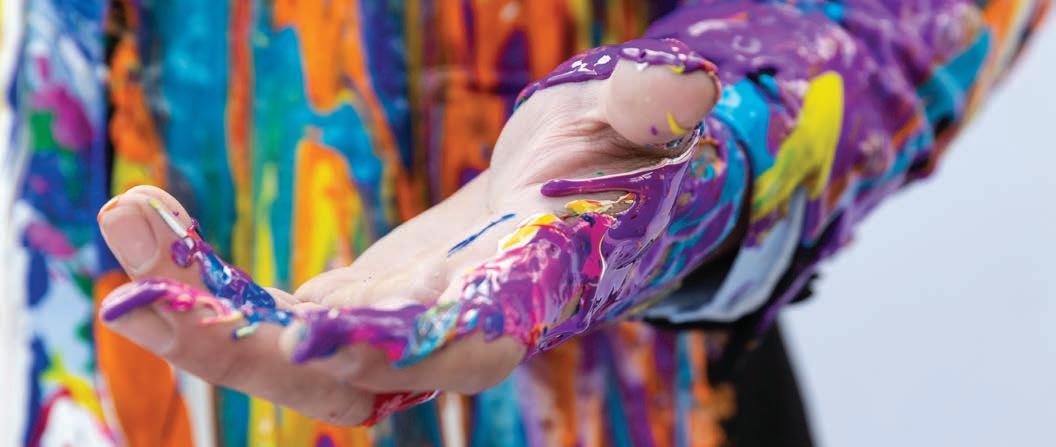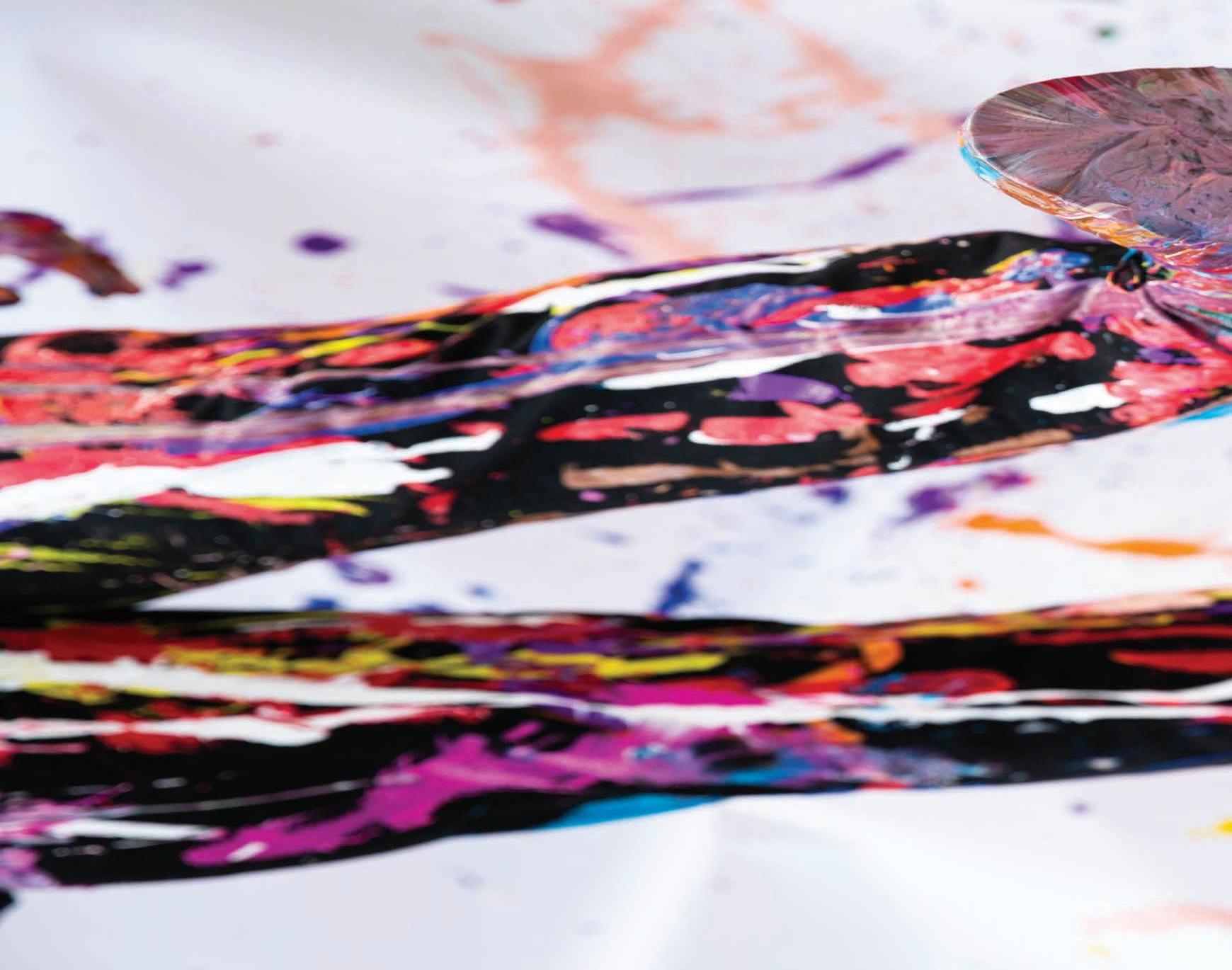
4 minute read
Cultivating Creativity
Art for the Non-Artist
Written by Sophie Gravitt and Photo Illustration by Reagan Lee
Advertisement
There are two common classifications of people when it comes to art: good artists and bad artists. What if there was more to art than simply being good at it?
Art can help people cope with hardships, expand their creative skills and contribute to their academic ability as well as their career. Art has both personal and professional benefits for all kinds of people, not just those who are considered artistic. For some, art may entail classical practices such as drawing, painting or sculpting. For others, it may be interior design, photography, theatre or writing. Most importantly, the purpose of art is creativity, not always a finished product.
The World Economic Forum, an international organization that shapes industry agendas, completed a study on creativity in April 2019. Researcher Kate Whiting says that creativity is crucial for effective leadership, ranking creativity as the third most important skill for employers. After interviewing 1,500 CEOs of successful businesses across the world, WEF concluded that those who listed creativity as one of the top three leadership traits were up to 20% more likely to pursue innovation through business model change.
According to Dr. Erin Smith, associate professor of psychology and certified developmental psychologist, there is a much more meaningful purpose to artistic practices than most assume.
“Everyone should dabble in the arts if we define art broadly. It is so important psychologically to have more than just the thing you want to do for the rest of your life,” Smith says.
Smith explains that there are two different types of thinking: convergent and divergent. Convergent thinking is thinking normally or following the usual patterns of the brain. Divergent thinking is diverging away from those normal patterns. Thinking exercises creativity, which in turn enhances many other cognitive abilities and skills.
“To be exceptional in anything you do requires creativity. To be a good scientist you must be a creative scientist. You must find new ways to solve old problems,” Smith says.
Annette Armenta, alumna of California State University, San Bernardino, earned a bachelor’s degree in liberal studies. She says she always admired art growing up but did not pursue it until halfway through college. Armenta discovered the many benefits of artistic practices including enhancement of academic thinking.
“I am a very visual learner. Practicing art helped me academically because it helped me see things in a new way,” Armenta says. “I need something new to feed my creativity, and art is constantly changing, which helps me see things in a new way. Art added color to the dark places of my world.”
Creativity does not always need to be used for professional or academic purposes. People have found that it is actually most beneficial when you practice creativity for the sole purpose of practicing creativity. Shekiah Warren, senior intercultural studies major, is interested in travel photography, but she refrained from pursuing this for a long time because she did not consider herself to be creative.

“It’s been especially therapeutic during the projects I’ve done only for myself, the ones that don’t exist to the world outside of my knowledge and creation of them. Those have breathed life into my creativity because it was a chance to experiment without the pressure of meeting expectations of others,” Warren says.
Art also helps us cope with our emotions. When going through a very difficult time of loss in her life, Smith realized many things about her identity. She realized that who she was a person seemed too limited because everything she did revolved around work or family. She began to question what she was doing for herself. Smith bought an art book and began to explore the unfamiliar realm of drawing. Smith had always considered herself to be bad at art, and even when she started learning how to draw, she still considered herself a “bad” artist. However, her goal was not necessarily to become good at it.
“The point is not that I got good at it — the point was that I did something that had no other end in and of itself than to give another dimension to who I was. Society implicitly suggests that our worth is in what we can produce, and I think that is wrong, un-Christian and psychologically unhealthy. To pursue things with no output has value. I won’t get paid to do art, but I do it anyway,” Smith says.
Smith says it is psychologically proven that there is a kind of happiness associated with stress. Some people consider art to be a stress reliever, but the reality for others is that it can sometimes add stress. This does not have to be a bad thing. Smith described the three different states of happiness, one of which is called Flow. Flow occurs when someone is so immersed in a task that time flies by without them even noticing. This state of happiness is often motivated by stress, which contributes to the rewarding factor of a task once it is accomplished.
“This kind of happiness leads to a full, contented life, which I think is much closer to the Christian version of happiness. Engaging fully in a task, including one that involves artistic expression, is very beneficial for our well-being, even if stress is experienced in the process,” Smith says.
Creativity is not a trait that some are born with and some are not. Creativity can always be cultivated. Artistic ability can always be developed. It is not the product of creativity that matters, it is the pursuit of it.










